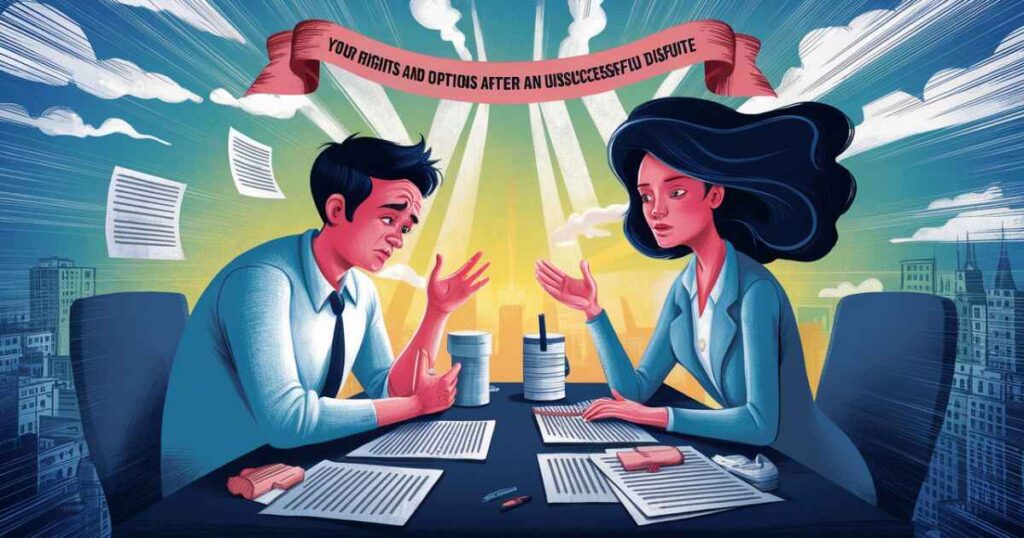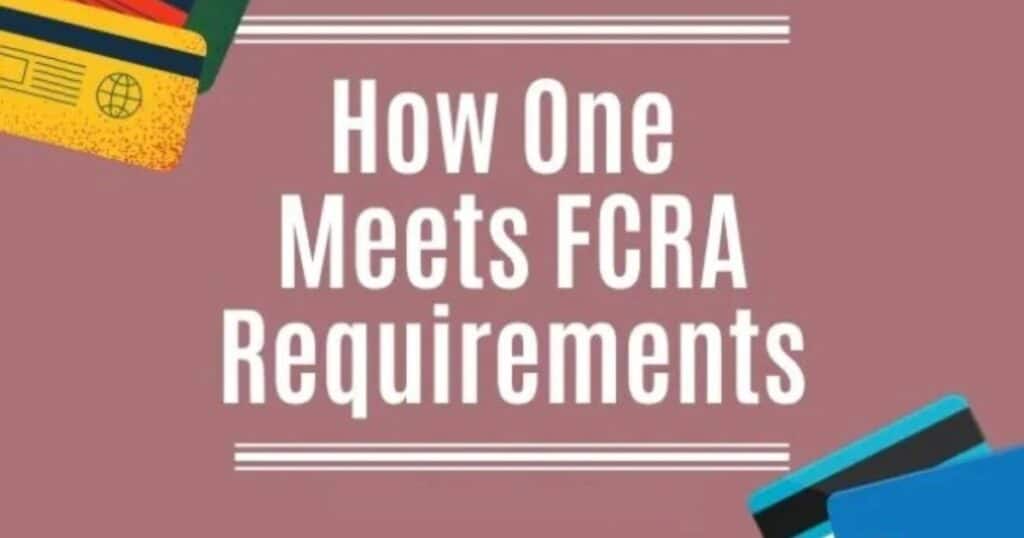Have you ever meticulously reviewed your credit report only to stumble upon the puzzling phrase “account disputed meets FCRA requirements”? If so, you’re not alone. This cryptic statement has left countless consumers scratching their heads, unsure of its implications for their credit standing. In this comprehensive guide, we’ll demystify the meaning behind this phrase and shed light on your rights under the Fair Credit Reporting Act (FCRA).
The Powerful Consumer Protections of the FCRA
Before we delve into the meaning of “account disputed meets FCRA requirements,” it’s essential to understand the FCRA – the powerful consumer protection law that governs the activities of credit reporting agencies (CRAs) like Experian, Equifax, and TransUnion.
Enacted in 1970, the FCRA’s primary purpose is to ensure the accuracy, fairness, and privacy of consumer credit information. It sets forth specific rules and regulations that CRAs must follow when compiling, maintaining, and disseminating credit reports.
One of the most significant consumer rights under the FCRA is the ability to dispute any inaccurate or incomplete information on your credit reports. When you file a dispute, the credit bureaus are legally obligated to conduct a reasonable investigation into the disputed item(s).
Here’s a breakdown of the key FCRA provisions related to credit report disputes:
- Reasonable Investigation Requirement: Credit bureaus must conduct a reasonable investigation into any disputed items within 30 days (or 45 days for disputes received after September 2020) of receiving the dispute.
- Verification Process: During the investigation, the bureau must verify the disputed information with the creditor or data furnisher that provided the original details to the bureau.
- Correction or Deletion: If the investigation cannot verify the disputed information as accurate, the bureau must correct or delete the inaccurate entry from the consumer’s credit report.
- Consumer Notification: The credit bureau must provide the consumer with a free copy of their updated credit report if any changes were made as a result of the dispute.
- Reinvestigation Requirements: If a consumer is dissatisfied with the outcome of a dispute, they can request a reinvestigation, during which the bureau must conduct a more thorough review of the disputed item(s).
- Legal Remedies: Consumers have the right to pursue legal action against credit bureaus that violate the FCRA’s dispute and investigation requirements.
By understanding these key provisions, you can better navigate the credit report dispute process and assert your rights as a consumer.
Decoding “Account Disputed Meets FCRA Requirements”

Now that we’ve covered the FCRA’s framework for credit report disputes, let’s dive into the meaning of the phrase “account disputed meets FCRA requirements.”
This statement appears on your credit report when a credit bureau has completed its investigation into a disputed item, as mandated by the FCRA. However, contrary to what many consumers assume, this phrase does not necessarily indicate that the dispute was resolved in your favor.
In essence, “account disputed meets FCRA requirements” means that the credit bureau has fulfilled the minimum legal requirements set forth by the FCRA for handling your dispute. Specifically, the bureau has:
- Received and Processed Your Dispute: The bureau has acknowledged receipt of your dispute and has initiated the investigation process.
- Conducted an Investigation: The bureau has contacted the creditor or data furnisher that provided the original information and has requested verification or correction.
- Rendered a Final Decision: Based on the creditor/furnisher’s response, the bureau has made a final determination regarding the disputed item – either deleting or correcting it, or verifying it as accurate.
Unfortunately, this decision may not always align with the desired outcome you were hoping for when you initially filed the dispute. If the creditor or data furnisher confirms the disputed information as accurate, the bureau is legally obligated to maintain it on your credit report, even if you disagree with the findings.
It’s important to note that the credit bureau’s decision is based solely on the information and evidence provided by the creditor or data furnisher during the investigation process. If the creditor stands by the accuracy of the disputed item, the bureau has no choice but to accept their verification as long as the FCRA investigation requirements were met.
Understanding the Credit Bureau’s Investigation Process
To better understand the meaning of “account disputed meets FCRA requirements,” it’s helpful to examine the step-by-step process that credit bureaus follow when investigating disputes. Here’s a breakdown of the typical workflow:
- Receipt of Dispute: The credit bureau receives your dispute, either through an online portal, by mail, or via a third-party credit repair service. The bureau logs the dispute and initiates the investigation process.
- Verification of Disputed Information: Within the FCRA-mandated timeframe (30 days or 45 days for disputes received after September 2020), the bureau must contact the creditor or data furnisher that provided the original information.
- Creditor/Furnisher Investigation: The creditor or data furnisher is required to conduct their own investigation into the disputed item. This may involve reviewing account records, statements, or other documentation related to the disputed entry.
- Creditor/Furnisher Response: After completing their investigation, the creditor or data furnisher must report back to the credit bureau with their findings. This response will either confirm the accuracy of the disputed information or provide any necessary corrections or updates.
- Bureau Decision and Notification: Based on the creditor/furnisher’s response, the credit bureau will take one of the following actions:
- Deletion: If the creditor/furnisher cannot verify the accuracy of the disputed item, the bureau must delete it from the consumer’s credit report.
- Correction: If the creditor/furnisher provides updated or corrected information, the bureau must update the consumer’s credit report accordingly.
- Verification: If the creditor/furnisher confirms the accuracy of the disputed item, the bureau must maintain it on the consumer’s credit report.
- Consumer Notification: Regardless of the outcome, the credit bureau is required to notify the consumer of the results of the investigation and provide a free copy of their updated credit report if any changes were made.
It’s important to note that the credit bureau’s investigation and decision are heavily reliant on the creditor or data furnisher’s response. If the creditor stands by the accuracy of the disputed information, the bureau has little recourse but to verify it on the consumer’s credit report, even if the consumer disagrees with the findings.
This is where the phrase “account disputed meets FCRA requirements” comes into play. By including this statement on the credit report, the bureau is indicating that it has fulfilled its legal obligations under the FCRA by conducting a reasonable investigation, verifying the information with the creditor/furnisher, and rendering a final decision based on the investigation’s findings.
Your Rights and Options After an Unsuccessful Dispute

If you find yourself unsatisfied with the outcome of a credit report dispute, it’s crucial to understand that you still have rights and options available under the FCRA. Here are some steps you can take:
- Request Investigation Details: You have the right to obtain a written explanation from the credit bureau detailing the methods and findings of their investigation into the disputed item. This information can help you understand the bureau’s decision-making process and identify any potential flaws or oversights in the investigation.
- Re-dispute with Additional Evidence: If you believe the bureau’s investigation was inadequate or if you have additional supporting documentation to bolster your case, you can choose to re-dispute the item. Provide any new evidence or explanations that may sway the investigation in your favor.
- Add a Consumer Statement: If your dispute remains unsuccessful, you can request that a consumer statement (also known as a statement of dispute) be added to your credit report. This statement allows you to explain your side of the story regarding the disputed item, which can be useful for potential creditors or lenders reviewing your report.
- Seek Legal Recourse: In cases where you believe the credit bureau has violated the FCRA by failing to conduct a reasonable investigation, failing to correct inaccurate information, or engaging in other unlawful practices, you may have grounds to pursue legal action against the bureau. Consulting with a consumer rights attorney can help you understand your options and potential remedies.
It’s essential to remember that the credit report dispute process is not always straightforward, and persistence is key. Don’t be discouraged if your initial dispute is unsuccessful – continue to assert your rights and provide additional evidence or explanations to support your case.
Tips for Effective Credit Report Disputes
- Be Specific and Accurate: When filing a dispute, clearly identify the item(s) you’re contesting and explain precisely why the information is inaccurate or incomplete. Provide as many details as possible to support your claim.
- Use the Proper Channels: Follow the credit bureau’s official dispute process to the letter. This may involve submitting your dispute through their online portal, by mail, or through a third-party credit repair service. Using the proper channels ensures your dispute is received and processed correctly.
- Provide Supporting Documentation: Strengthen your case by including copies of statements, receipts, canceled checks, or other relevant documents that support your dispute. Hard evidence can be more persuasive than your word alone.
- Follow Up Persistently: If your initial dispute is unsuccessful, don’t give up. Re-dispute the item, providing any additional evidence or explanations that may sway the investigation in your favor. Persistence is key when dealing with credit report disputes.
- Request Investigation Details: If a dispute is unsuccessful, exercise your right to obtain the methods and findings of the bureau’s investigation. This information can help you identify any potential flaws or oversights in the process, which can inform your next steps.
- Keep Thorough Records: Maintain detailed records of all your disputes, including copies of any correspondence, supporting documentation, and notes on conversations with credit bureau representatives. Good recordkeeping can be invaluable if you need to escalate your dispute or pursue legal action.
- Consider Professional Assistance: If you’re overwhelmed by the credit report dispute process or have a particularly complex case, consider seeking assistance from a reputable credit repair company or consumer rights attorney. They can guide you through the process and advocate on your behalf.
By following these tips and asserting your rights diligently under the FCRA, you can increase your chances of resolving credit report inaccuracies and avoiding the frustrating “account disputed meets FCRA requirements” statement.
Read This Post: Top Safety Slogans For Your Workplace In 2024
Real-World Examples and Case Studies
To further illustrate the implications of “account disputed meets FCRA requirements” and the credit report dispute process, let’s examine some real-world examples and case studies:
Example 1: Incorrect Payment History
John received his annual credit report and noticed that one of his credit card accounts incorrectly showed several late payments, even though he had always paid on time. He filed a dispute with the credit bureau, providing copies of his bank statements and canceled checks as proof of timely payments.
After the investigation, the credit bureau’s decision was “account disputed meets FCRA requirements.” The creditor had confirmed the late payment entries as accurate, despite John’s evidence to the contrary.
In this case, John could:
- Request a written explanation of the bureau’s investigation methods and findings.
- Re-dispute the item, providing additional documentation or explanations to challenge the creditor’s claims.
- Add a consumer statement to his credit report, explaining his side of the story.
- Consult with a consumer rights attorney to explore potential legal remedies against the credit bureau or creditor for failing to correct inaccurate information.
Example 2: Mistaken Identity
Sarah discovered that her credit report contained several derogatory items, including collections accounts and charge-offs, that did not belong to her. She suspected she was a victim of identity theft or a mixing of files with someone else’s information.
Sarah promptly filed disputes with the credit bureaus, providing a copy of her driver’s license and other identification to prove her identity. However, after the investigations, the credit bureaus’ decisions were “account disputed meets FCRA requirements” – the creditors had verified the accounts as belonging to Sarah.
In this situation, Sarah could:
- Request a detailed explanation of the credit bureaus’ investigation methods and the creditors’ verification processes.
- Re-dispute the items, providing additional evidence to prove her identity and the inaccuracy of the derogatory accounts.
- File an identity theft report with the Federal Trade Commission (FTC) and provide copies to the credit bureaus as supporting documentation.
- Seek legal assistance to compel the credit bureaus and creditors to correct the inaccurate information or face potential legal consequences for FCRA violations.
These examples highlight the importance of persistence, thorough documentation, and asserting your rights when facing credit report disputes that are not resolved in your favor.
Conclusion
While the phrase “account disputed meets FCRA requirements” may seem confusing and frustrating at first glance, understanding its meaning is crucial for navigating the credit report dispute process and protecting your consumer rights.
Remember, this statement does not necessarily indicate that the dispute was resolved in your favor. Rather, it signifies that the credit bureau has fulfilled its legal obligations under the FCRA by conducting a reasonable investigation, verifying the information with the creditor or data furnisher, and rendering a final decision based on the investigation’s findings.
However, the FCRA grants you powerful consumer protections, including the right to dispute inaccurate information on your credit reports and to receive a thorough investigation from the credit bureaus. By exercising these rights diligently and following best practices for disputes, you can take an active role in maintaining the accuracy and integrity of your credit profile.
Regularly reviewing your credit reports and promptly addressing any errors or inaccuracies is essential for safeguarding your financial well-being. Don’t hesitate to assert your rights under the FCRA – your credit health depends on it.







